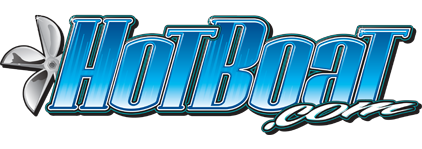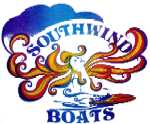Yeah, this is Buzzz. Paul goes by FC Pilot. you will see him around.
And yeah, when I have something that I don't need, I give them away for a pretty good deal. I just figure that I would have loved to get a deal like that when I was starting out, so why try to get rich off of something that I am not using. I did a boat less motor for a case of MtDew, parts for cheap and even a guitar or two. I am glad that the kid digs the guitar. That instrument kept me out of trouble and out of spending cash for many years.
Now, Bob, I don't mean to argue, but I do have one question; Do you really think the strut gets almost equal force front to back? I see prop shafts break all the time. Even one on a TAF today. They always break right at the back of the strut. NEver seen one at the front.
Results 21 to 30 of 49
Thread: Question for GN7
-
09-14-2013, 09:15 PM #21Member

- Join Date
- Nov 2012
- Location
- Peoria, AZ.
- Posts
- 128
-
09-14-2013, 09:35 PM #22
the wear patterns in the bushing are reasonably even front to back, with slightly more wear towards the back at the top. Most of the wear is between 11:00 and 2:00. We, as well as most people run 2 bushings. It the rear was the only one that wore, we wouldn't bother with the front piece.
Shafts break where they do because of the key slot. They always break right at the back of the prop, and the end of the key slot. The key slot creates a stress riser, any slot milled into a shaft. Thank goodness, because if it didn't, then the shaft would and could break anywhere along its length, and you can imagine the disaster that could create.
the LIFT of the prop on the shaft isn't what breaks them, its the torsional twist, not different than when a crank snout breaks. Which BTW, also ALWAYS break at the end of the key slot, and very seldom at the front crank throw arm, which is the next most likely spot.
Input and output shafts on the V drive, same thing, always at the end of the key slot. Occasionally END of the gear splines.
Broken a couple output shafts on desert M/Cs as well. Splines and key slot are the bane of all power shafts.
Every crank snout I have ever seen snap, broke behind the t gear at the end of the key slot. All the power is transmitted thru the damper, and there is no mechanical connection between the damper and T gear, yet never once seen a snout snap between the 2 in the middle of the key slot. The front crank throw arm sees every HP being passed thru the crank, as opposed to the rear crank arm the see near nothing. (opposite a car engine). The front arm is the second most likely place to break the crank. But never in the middle of the snout.
Just like the prop shaft breaking behind the strut, this is not caused by up forces, or some directional thrust, its 100% due to torsional twist.
Last edited by gn7; 09-14-2013 at 09:53 PM.
-
09-15-2013, 02:40 PM #23WESTERNAEROGuest
I've started drawning up the new strut. What do you think? Have anybody ever used the engine mount as the gusset/brace before, is this wise to do? Opinions are welcome, it's much easier to change the CAD drawing now. Thanks.
-
09-15-2013, 03:39 PM #24
-
09-15-2013, 05:05 PM #25
-
09-15-2013, 05:15 PM #26WESTERNAEROGuest
I wonder if maybe it would be TOO rigid, or maybe being tied together like that you might get some really bad harmonics every where. Hmmmm?
-
09-15-2013, 05:21 PM #27
It can never be too rigid, and I am not all that sure that vibrations and harmonics is such concern. The stringers deal with it. But I know the engine moves a lot more tan many people think, and the question becomes, is the engine holding the strut, or is the strut bracing the engine?
-
09-15-2013, 05:56 PM #28WESTERNAEROGuest
With the engine tied to the stringer rails and the strut brace tied to the stringer rails, would the movement of the engine be transferred to the strut the same as if they were rigged like the CAD drawings?
-
09-15-2013, 10:09 PM #29
I can only say that I have seen drag and some river flats with the strut tied to the block, but usually the stringers. Not sure I have ever seen a circle flat with the strut tied to anything. But I KNOW I the few GNs that tried it, were only that way for a couple races. Every V bottom I know of has a either a large strut box like mine(its huge) bolted and glasses into the bottom, or just bolted, or just alum angles bolted to the bottom and the strut.
Is it because the bottom moves around more than a flat? Or because they deal with rougher water? I don't know. I only know that I haven't seen a hard running V bottom with the strut tied to the stringers or engine.
And I know my engine moves around more than I would have thought. If I am not mistaken, the SS80 and a couple others have struts tying the engine to the stringers, along with the motor plates. I have considered it, or using 1/2 plate and blocks on both sides of the plate.
-
09-16-2013, 12:36 AM #30
The bottom needs to move around tying it all together will promote stringer fatigue or lifting of the stringers . Constant pounding on the bottom will try to push the motor plate up taking everything with it . Use a drop thru with a block or a recessed bolt on .




 Reply With Quote
Reply With Quote




Bookmarks